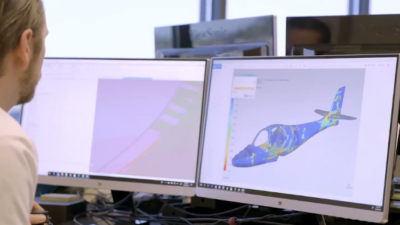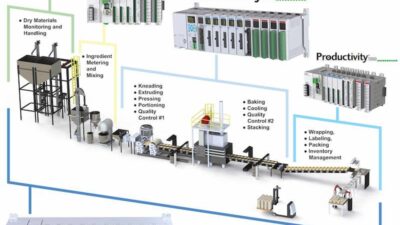Microsoft (Redmond, Wash.) has taken the next step in Windows NT technology and caught some by surprise. As NT has been welcomed into corporate Information Technology departments, Microsoft has been moving to reach the embedded, real-time markets. Closely following the launch of Windows CE is the announcement of embedded Windows NT.
The need for a general-purpose operating system (OS) capable of spanning business and industrial applications is growing. User familiarity with the interface, ability to incrementally improve the system, open connectivity through technologies like DDE (dynamic data exchange), COM (component object model), DCOM (distributed COM), and OPC (OLE for process control) makes Windows an attractive OS for embedded industrial applications.
Before Windows NT could be considered as a real-time operating system (RTOS), Microsoft had to overcome two obstacles. The memory footprint of the OS had to be reduced enough to be stored in ROM. Then the NT solution that shuts down the system in response to hardware problems or misbehaving software known colloquially as ‘Blue Screen of Death (BSOD)’ had to be addressed in a way acceptable to machine control designers.
Actually, VenturCom (Cambridge, Mass.) has already addressed the second problem with real-time extensions (RTX) to Windows NT. RTX controls processor interrupts permitting NT to run when mission critical instructions are completed. If NT does shut down due to system errors, RTX captures and evaluates the stop event enabling the control application to continue.
VenturCom’s Component Integrator solves the embedding part of the problem. It is a modular, extensible system for engineering and deploying embedded NT products. There is support for target system development including system and application software component integration, system design and configuration, and target building. Component Integrator decomposes Windows NT into a hierarchy of individually selectable components. Configurations can be created spanning the range from minimal run-time support for a single application–with a file system footprint of less than 10 MB–to complete NT Workstation or NT Server installations.
Embedded Windows NT is based upon version 4.0 with SP4 and includes these functions:
Built-in networking and communication services like TCP/IP, DHCP, WinSock, RPC, FTP, etc.;
Interoperability with existing PCs and servers;
Full Win32 API support;
Supports all Windows NT services;
C2-level security;
Symmetric multiprocessing support;
Development tools including Visual Basic and Visual C++; and
Availability of off-the-shelf hardware and device drivers.
Jim Allchin, senior vice president of personal and business systems at Microsoft, says, ‘Windows NT Embedded 4.0 will provide vendors with one of the fastest ways to deliver embedded products and solutions to industry.’


